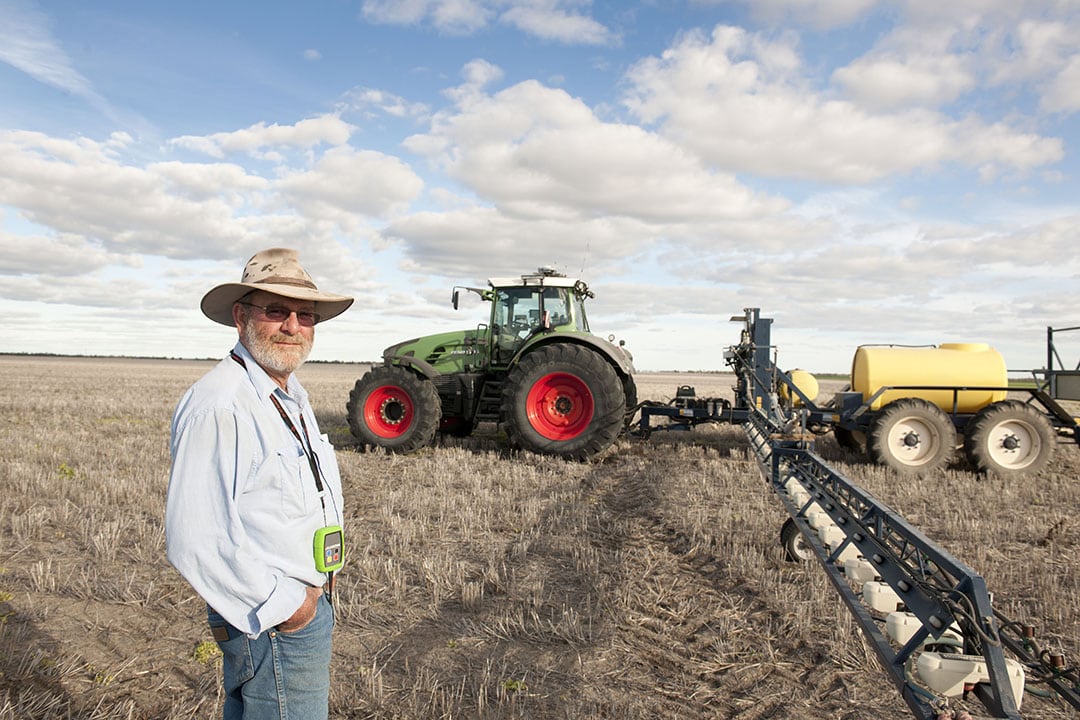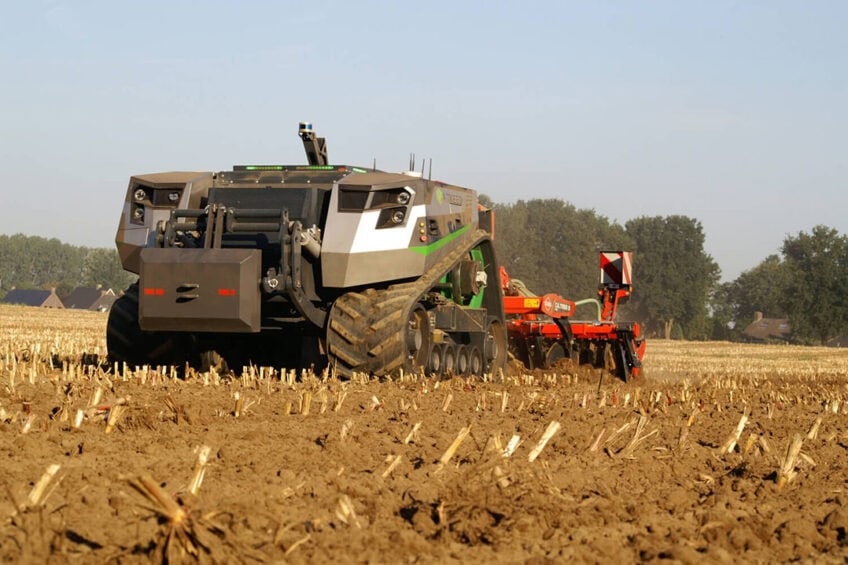The Autonomous Wizard of Oz blog Part 5: ‘From a big autonomous tractor to a 112 kW field robot’

Gerrit Kurstjens is a pioneering farmer who has already clocked up 40,000 ha of autonomous operations on 13,000 ha of cropping area at Beefwood Farms, Moree in New South Wales, Australia. In this episode: A year-long search for a suitable autonomous tractor to replace its old stalled version fails. He therefore decides to go for AgXeed’s 112kW strong autonomous Agbot and has now worked with it for a few months.
Read previous episodes of The Autonomous Wizard of Oz blog Part 4, Part 3, Part 2 and Part 1.
In August 2022 at the end of the travel restrictions, we travelled to Europe and America to decide which autonomous tractor to purchase. There were a lot of interesting and promising autonomous units in Europe, California and Iowa. Often the autonomous units were too small for our existing equipment or would not be ready for the market soon. After weeks of travelling I felt that my expectations could be a bit too high.
Ordered the Agbot despite that it looked underpowered
When discussing the way forwards with Agxeed, they told me that the standard production tractors were not suitable for autonomous work. I expected that it was a good sales story and did not really believe it. Now I must confess that Agxeed was right. Their new electric drive system has a lot of advantages. It is easy to regulate, and it can do what is impossible with a conventional tractor. The new E-motors compensate partly for the lack of horsepower and are known for their high torque, better efficiency, low maintenance and long life. I ordered the Agbot from Agxeed despite thinking that it looked underpowered, but it was close to my expectations. It could be delivered in Australia in 2022. We did not know that the sea-freight to Australia would collapse in December 2022.
Text continues below picture

With a few inputs you can do much more
To see this low horsepower unit working in the field with the big and heavy equipment is very impressive. In a few weeks it clocked up 400 hours mainly working with a tramline renovator. I am used to setting up new machines swinging around a spanner. It is a new experience that instead of spanners you need only a laptop or iPad. With a few inputs you can do much more, such as the 100-kw electric PTO can be set to whatever revolutions you like, depending on the torque on the PTO you can set to lift the 3-point linkage a bit, or you can choose to slow down the forward speed, or rev-up the engine whatever you like, no problem.
The 700 volt power take off is very interesting
The 700 volt power take off is very interesting. It can replace the high maintenance PTO and gearbox with an electric cable and electric motors straight to the wheels of the spray-rig or trailer or planter. You get an “unstoppable” light unit with high efficiency and low maintenance. It saves a lot of compaction and energy. It looks a much better solution than ballasting an expensive tractor to 20 ton.
Text continues below video
Can the sprayer be towed with less than half the horsepower?
The main work that we planned to do with the Agbot is spot-spraying with the existing 24-meter WeedIt. But after the first experience with the Agbot, we have changed our idea and plan to put the 48-meter WeedIt behind the Agbot. Till now the 48-meter spray rig was always pulled by a JD 8345, we are optimistic that it can be towed by the Agbot with less than half the horsepower. If this works, the cost of weed control with the Agbot and WeedIt is only a fraction compared with broadacre spraying.
Not entirely convinced yet…
I have partially returned to my earlier view regarding the technical part of a standard tractor sitting between the engine and the tracks or wheels. Apparently, the gearbox, converters and drive shafts with tans wheel housings and cross pieces can very well be replaced with an alternator and Electro motors. The big change is the new standard of 700 volts DC ( Direct Current) instead of the 350 volts AC ( Alternating Current). By boosting the Voltage, heat generation is reduced, also the cables can be much thinner. With this comes the advantage that e-motors are now built in larger series and are affordable. Moreover, they are better and easier to control.
Text continues below picture

I have not yet forgotten the Precision Makers drama
However, the disadvantages of the Agbot are: too little power for different jobs, no driver platform, fewer service options obtaining parts. It would have been a very difficult decision that would probably have come out in favour of a standard tractor if a standard tractor of plus 200kw equipped with an autonomous system available for Australia by a company that will still be around in a few years. I have not yet forgotten the Precision Makers drama. Due to takeover of John Deere at the time, all service and support fell away so the Precision Makers autonomous system on my tractor soon went completely haywire and became worthless.
See our catalogue with available multi-purpose field robots that are suitable for multiple tasks
Text continues below picture

Join 17,000+ subscribers
Subscribe to our newsletter to stay updated about all the need-to-know content in the agricultural sector, two times a week.



